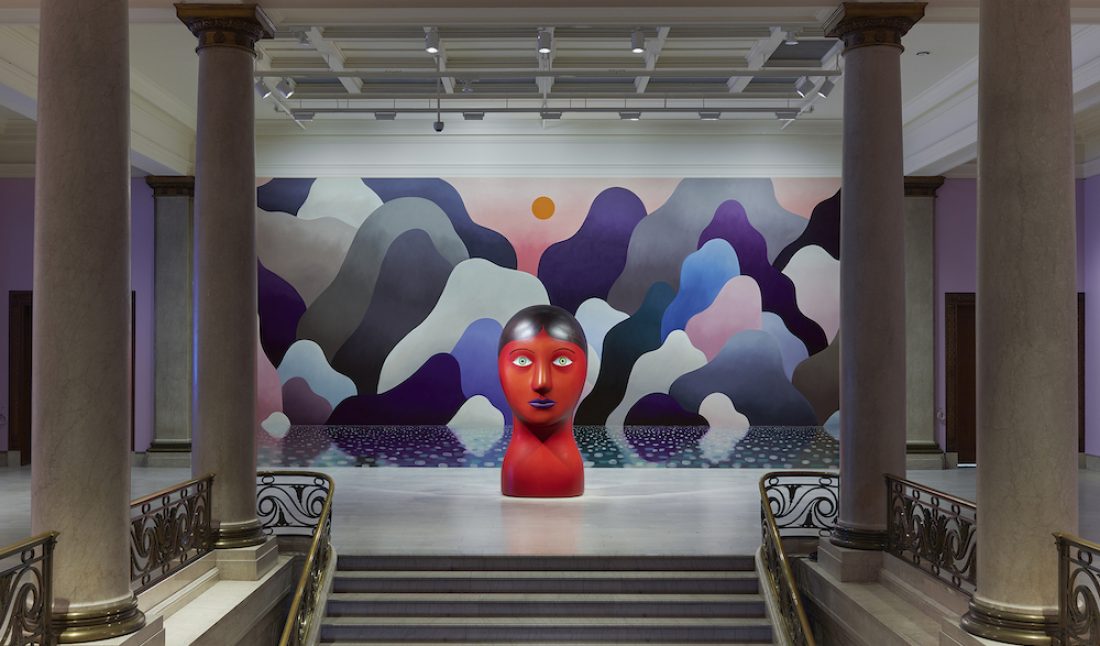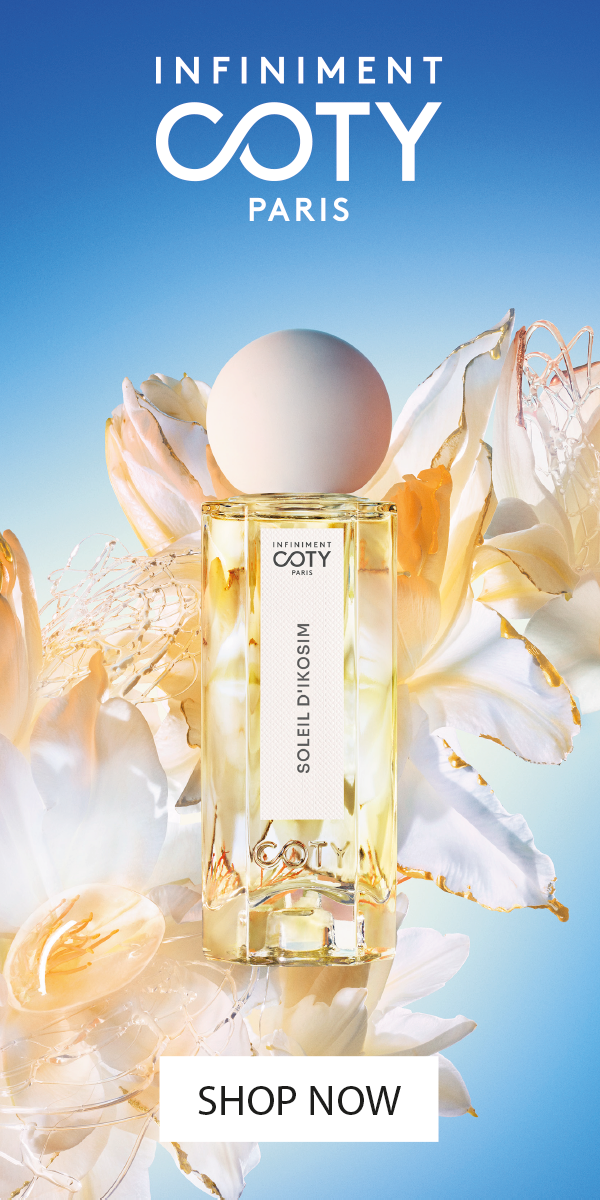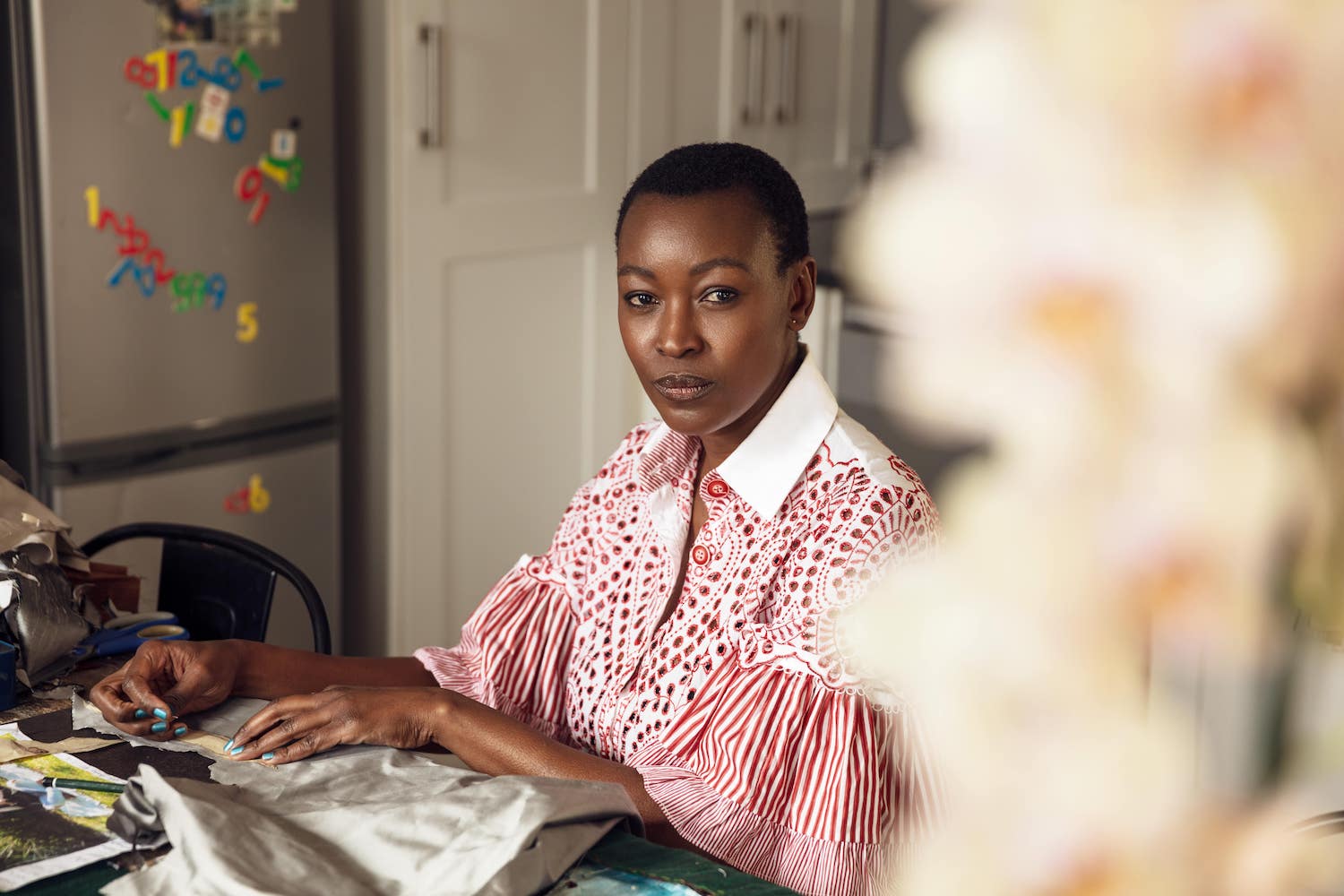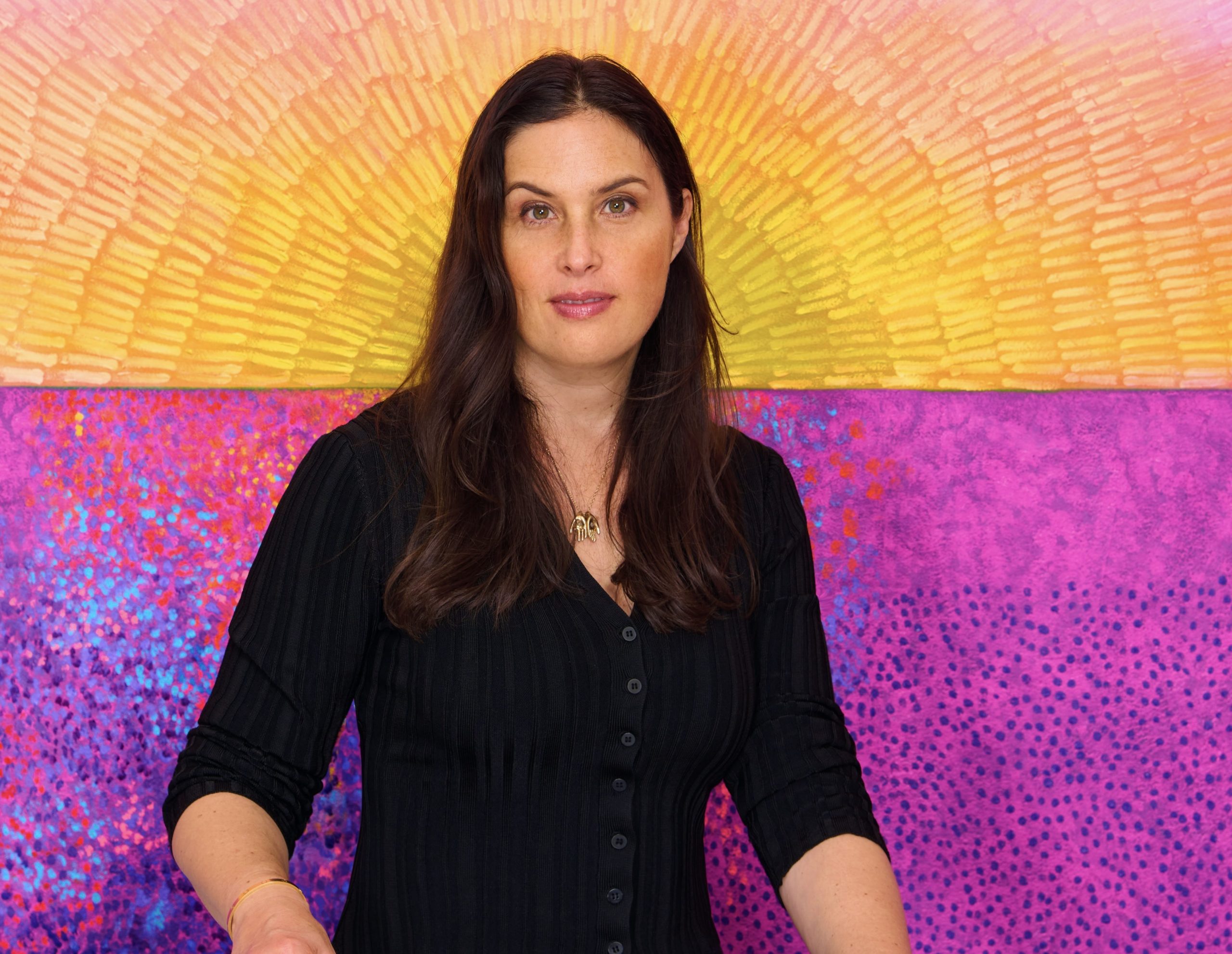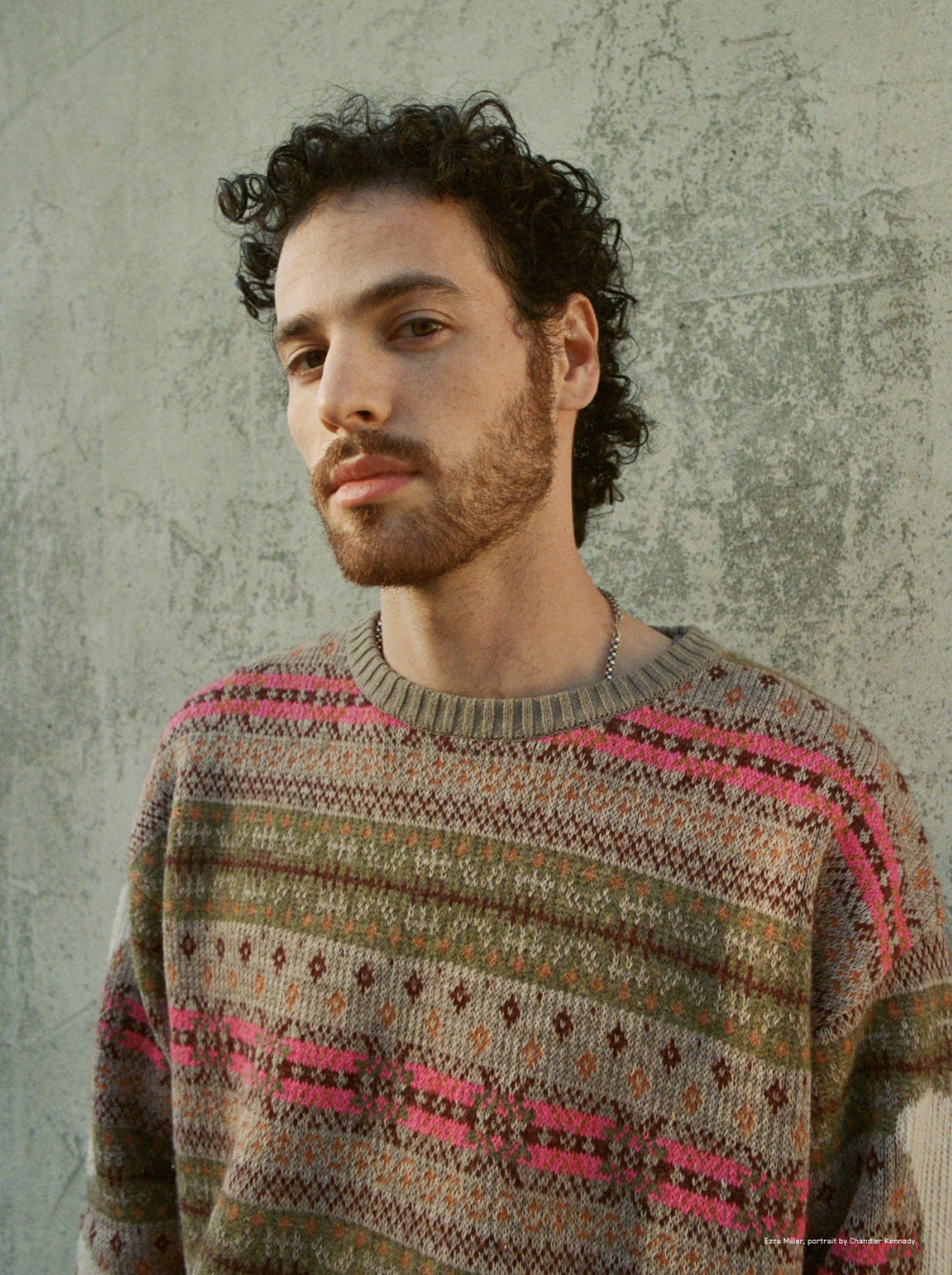The paintings, pastels, and sculptures of Nicolas Party are a celebration of color and art history. Created in a style and language recognizably his own, they are in clear dialogue with figures and movements of the past—from landscapes to portraits, and from Sottobosco to symbolism. His monumental 3-D works reference classic Greek and Roman sculpture and even bring to mind the mysterious Easter Island heads. Rendered in rich hues, they challenge conceptions around tastes and trends—past and present.
Over a year ago, Party was invited by the director of the Montreal Museum of Fine Arts, Stéphane Aquin, to create an exhibition that combines his own work with selections personally curated from the collection. Culling from books and catalogues of shows and collections, Party found himself overwhelmingly drawn to paintings that looked at nature and our relationship with it. Masterpieces by Gustave Courbet, Ferdinand Hodler, Henri Fantin-Latour, Nicolas Poussin, Otto Dix, Lawren S. Harris, and others hang alongside over 100 works (including a few new landscapes in pastel) and a series of large-scale, site-specific murals.
Whitewall spoke with Party as he was working on one such mural on a visit to Montreal (the Swiss artist is currently based in New York). He shared the discovery he made, over and over, seeing historical works anew, amid current crises like climate change and forest fires. The exhibition “L’heure mauve,” on view through October 16, is one that encourages curiosity, taking visitors on an immersive journey of sight and sound, thanks to a collaboration with artist Pierre Lapointe.
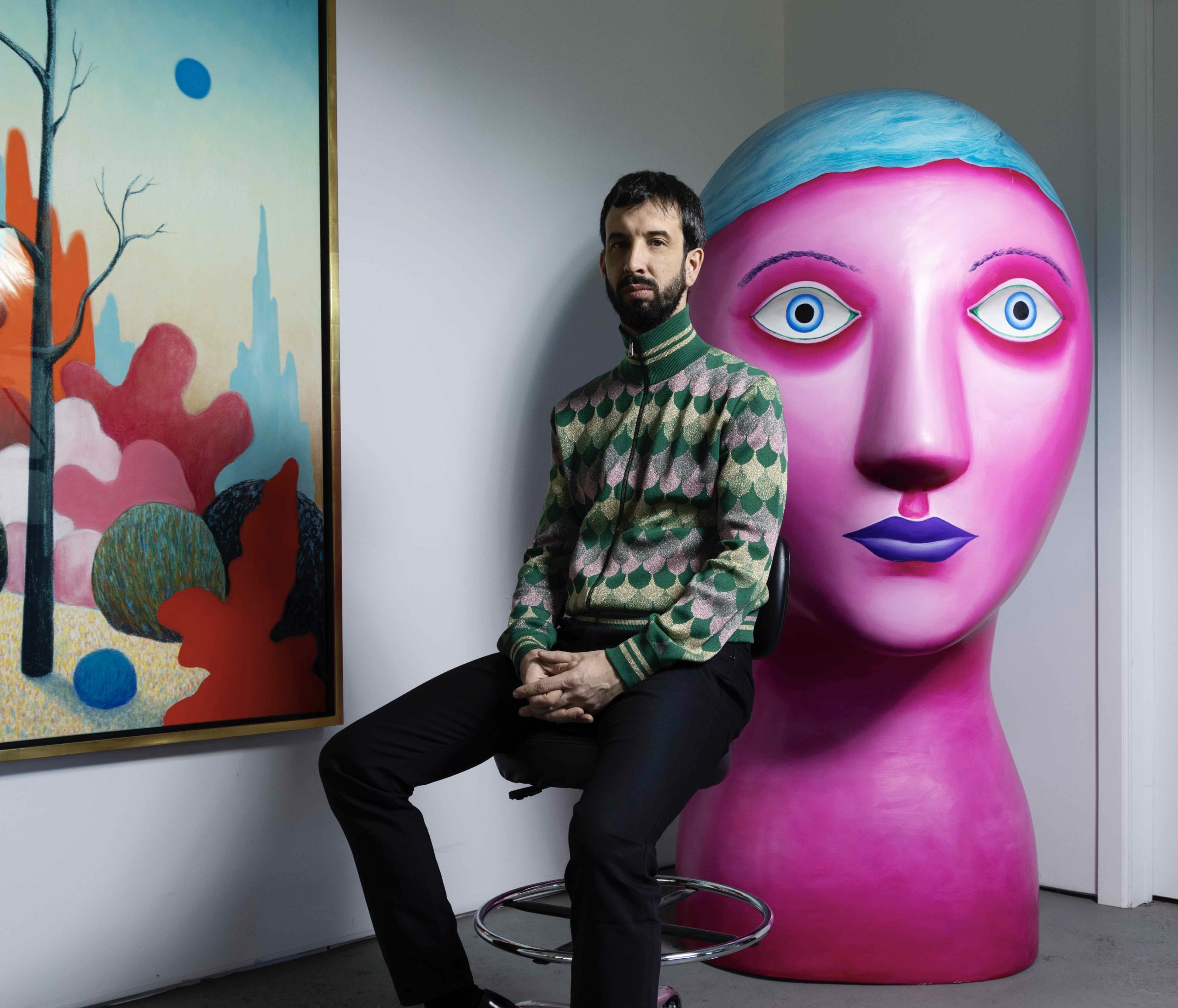 Nicolas Party in his studio, photo by Steve Benisty.
Nicolas Party in his studio, photo by Steve Benisty.
WHITEWALL: How did you arrive at the title work, Ozias Leduc’s L’heure mauve (1921)?
NICOLAS PARTY: I didn’t know the artist Ozias Leduc, so when I discovered his work, I was very drawn to it. I chose three paintings of his for the show, and one of the paintings, L’heure mauve, I thought would be a good title.
The figure of Leduc in the show is very important because he is a Quebec artist. In Canada, what comes to mind is the Group of Seven— Lawren Harris, Frank Johnston, those kinds of landscape artists. Leduc was a North American symbolist, which is not that common here. And because I’d been living in Belgium for a couple of years and got really interested in Belgian symbolism, especially an artist like Léon Spilliaert, I felt it was a great artist to highlight in the show.
I did a cloud pastel in mauve and purple-gray that works very well with the title. When I spoke with Bénédicte Ramade, who is writing a catalogue essay, she made a connection between the idea of L’heure mauve and those clouds with the purple and red sky we’re experiencing with big forest fires. Suddenly the pastel I did of those clouds—they weren’t conceived like that, but they could be seen from that angle.
WW: What was it like to dive into the collection, putting on a curator hat? How did it impact the selection of your own works?
NP: All the work that is chosen is very historically grounded. The show is very focused on nature and our relationship with the environment. There is a majority of loans of my own works, a group of sculptures I made for the show, and a group of maybe 10 or 13 new pastels. Some of them are directly in reaction to the historical paintings.
The most recent pastel I did is a very recognizable forest fire painting. It looks quite different from my other works. It was clearly influenced through my journey of talking with Bénédicte and my involvement with the collection—our new present way of conceding the relationship of nature and crisis and anxiety. How do we see those works now in the current climate? That’s one of the angles of the show.
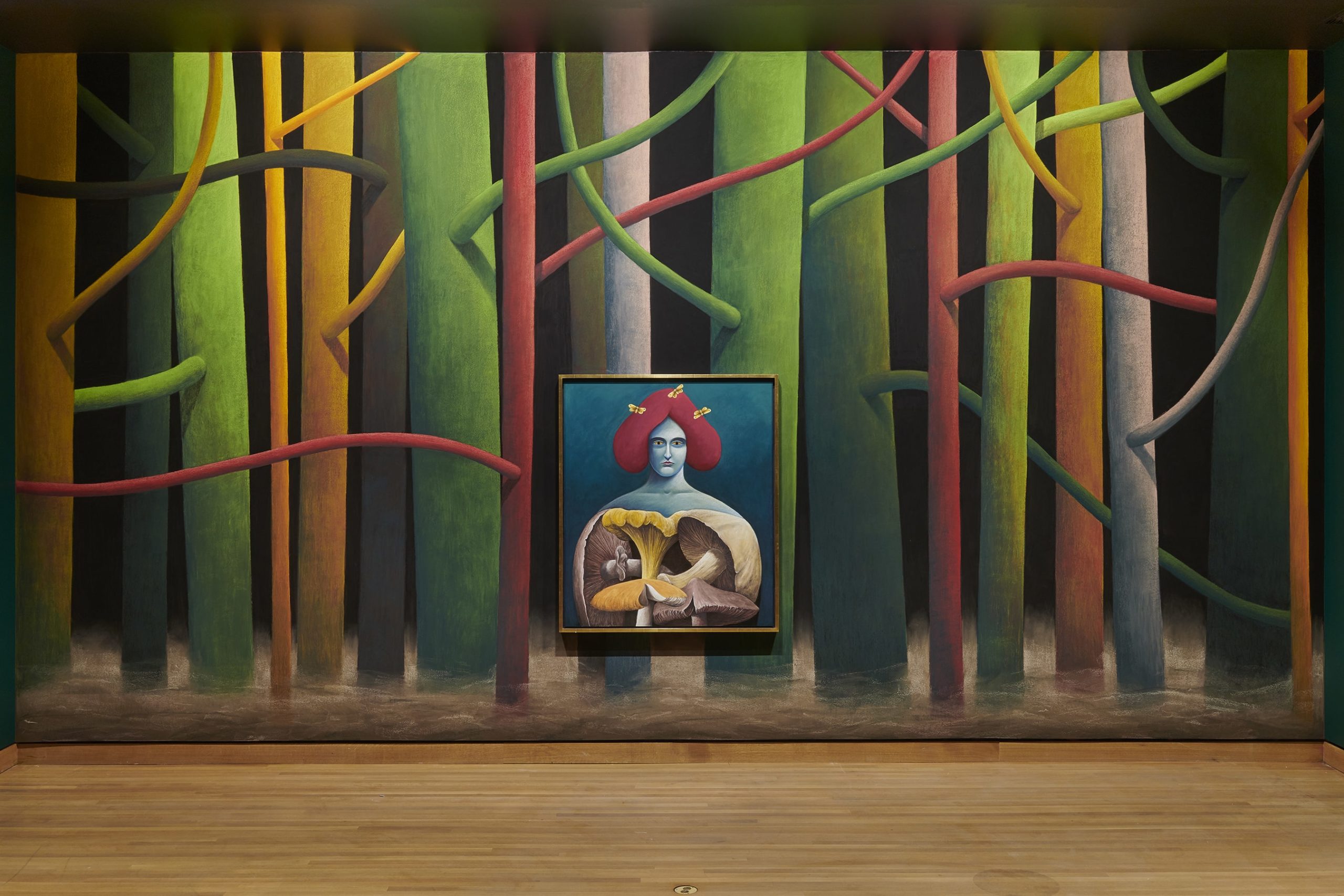 Installation view of “Nicolas Party: L’heure mauve,” (2022) at Montreal Museum of Fine Arts, © Nicolas Party, photo MMFA, Jean-François Brière.
Installation view of “Nicolas Party: L’heure mauve,” (2022) at Montreal Museum of Fine Arts, © Nicolas Party, photo MMFA, Jean-François Brière.
WW: These landscapes of the past take on a new meaning in our present day.
NP: Exactly. For example, Ferdinand Hodler, a famous Swiss artist, has a painting, The Woodcutter [1910]. It was designed to be on a Swiss franc bill at some point. It’s a fantastic painting of a woodcutter with a big ax cutting a tree. When it was conceived, in the early 20th century, it was to show that we finally have control over the environment. It was a celebration of technology, cities, of not being scared of nature and forests and mountains.
Of course, now—and especially in Canada where deforestation is a very hot topic—you see this painting completely differently. It’s very aggressive. This woodcutter is no longer a hero. I found it fascinating. The work has the same power; it’s just saying something very different.
That’s what I love in art, that it travels through time. With enough open doors, the work can be relevant almost forever. That’s unique in terms of manmade objects. Anything technological eventually becomes useless. Art is completely different. Good artwork is relevant forever. From the first drawings on the cave, people can look and have a very strong experience. They were conceived in a very different way than how we see them now.
WW: But we can still connect.
NP: Exactly. They are a little bit like a time travel tool, artworks. You can use them like the DeLorean in Back to the Future [laughs].
WW: As you said, so much of this show is focused on our relationship with nature. Was that intentional at the onset?
NP: No. In the beginning, I literally took all the books that I had from the collection and just picked pieces that intuitively spoke to me without any premeditated ideas. But very quickly there were some highlights of landscapes.
I came here a few years ago, and I discovered Lawren Harris from the Group of Seven. There’s a painting called Log Cabin [c. 1925], with trees and a log cabin in the back. I’ve been extremely influenced by those Lawren Harris trees.
The identity of the U.S. was built on the idea of the landscape and conquering that landscape. And in Canada, it’s a bit similar, and also in Switzerland. The landscape is the subject in art, and the inventionof the cultural identity is through the landscape and dominating the territory. It’s a complex history, obviously. For example, claiming your own territory in Canada or the U.S. is against the British Empire. And that comes with completely erasing the previous population from that landscape.
It’s difficult to remember that, for a long time, nature was hostile and dangerous. Going through a forest was not great; it was not a lovely hike. It’s the same in Switzerland with the mountains. Going to the Alps was very dangerous. Now you can go basically in your flip-flops to the top of the Matterhorn [laughs].
When I spoke with Bénédicte—she’s an eco-art historian—she talks about art history with an ecological angle that is very clear and grounded. For example, we have an amazing Jacques Linard still life of seashells and coral. At that time, it was like, “Look how great all this stuff is and we can take it as decoration,” and “The resources are endless, just go in the water and pick it up.” And now you see it, and half of those things don’t exist anymore. You see the painting in a completely different way. It’s almost become an archive of what was there. Looking at paintings of an animal or tree or landscape, it becomes a legacy of the past and how we see it now.
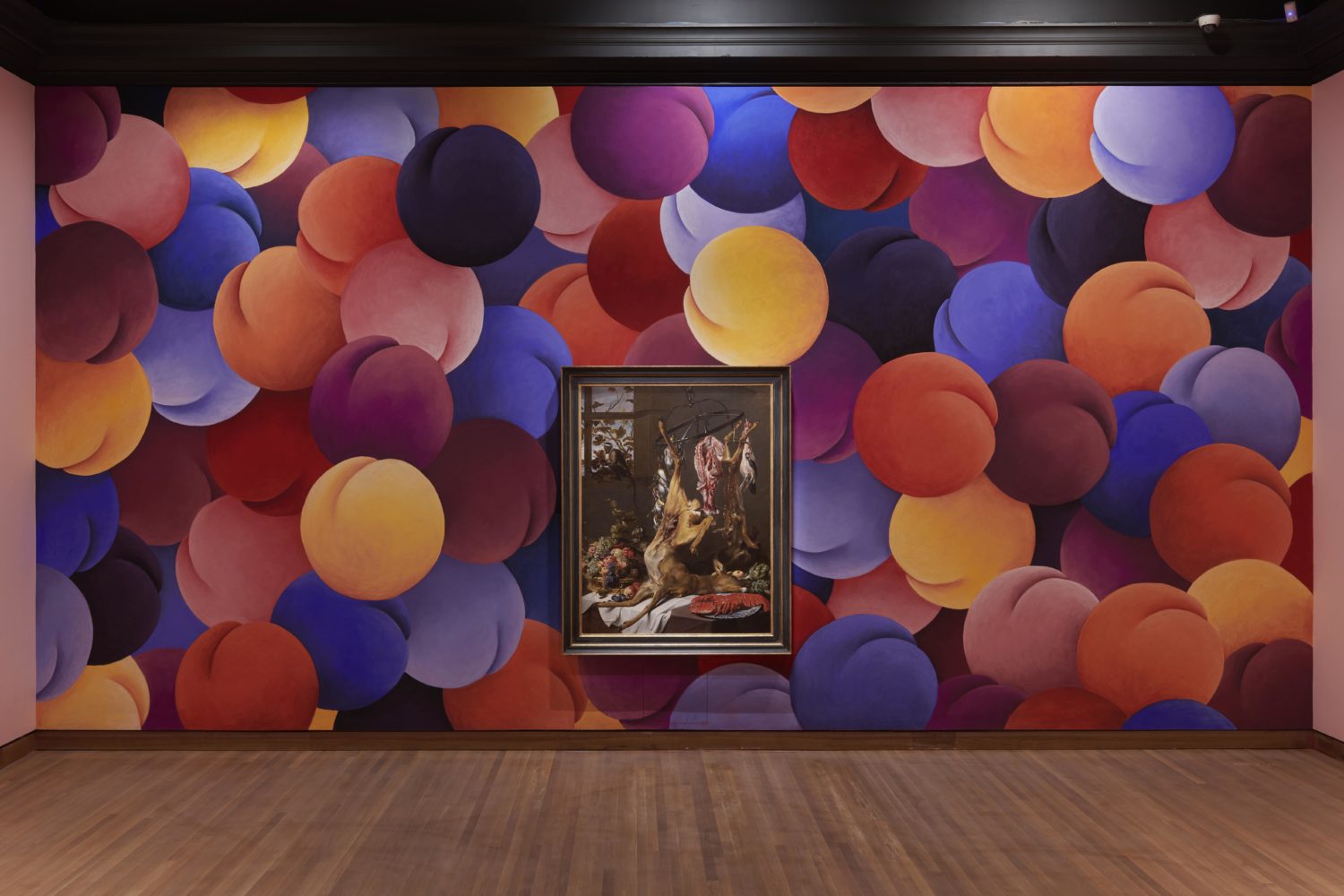 Installation view of “Nicolas Party: L’heure mauve,” (2022) at Montreal Museum of Fine Arts, © Nicolas Party, photo MMFA, Jean-François Brière.
Installation view of “Nicolas Party: L’heure mauve,” (2022) at Montreal Museum of Fine Arts, © Nicolas Party, photo MMFA, Jean-François Brière.
WW: How would you describe the new work you made for the show?
NP: All the pastels I did are landscapes. At the end, I made a big group of sculptures that are three of the shapes that I’ve been using in my sculpture work over the last few years, these heads and torsos. The sculptures form a group and are displayed in a very symmetrical manner that recalls a way of displaying classic Greek or Roman sculpture. It’s very symmetrical, with some repetitions.
All the shapes I’ve shown before, but they have insects or frogs on them that recall the Sottobosco room. The Sottobosco room is where you start the show, and the last room with the sculptures is painted in the same green. They communicate with each other as the painting depicts the forest floor, the undergrowth, where there is no light and you find mushrooms, salamanders, frogs, snakes, stuff like that.
The first room has one of my paintings that has a snake, and there is also a Nicolas Poussin painting, Landscape with a Man Pursued by a Snake [1637-1639]. There are two Otto Marseus van Schriecks, also with a snake. The idea of the first room is to have a little echo in Western history, Western culture. One of the first chapters of our storytelling, in the Bible, starts with our separation from nature and the promise that we will be doomed to be human and separated from the Garden of Eden. It created the first idea of a pristine landscape that is untouched by humans.
There’s a conflict between our perception of ourselves and nature. We’re constantly thinking we’re not part of it. We believe we’re smarter than animals, more powerful, we feel very different and out of place. And it’s obviously a topic of the present.
WW: Do you see the sculptures as the connection between the human and the landscape?
NP: No, I see them more as a relic. They are very directly referencing antique sculptures that you would see in museums.
It’s not really relevant to this show, but I’m interested in polychrome sculpture history. In the Renaissance, people started to reevaluate taste, how we should sculpt and paint the Greeks, the Romans. They chose to not paint them in color.
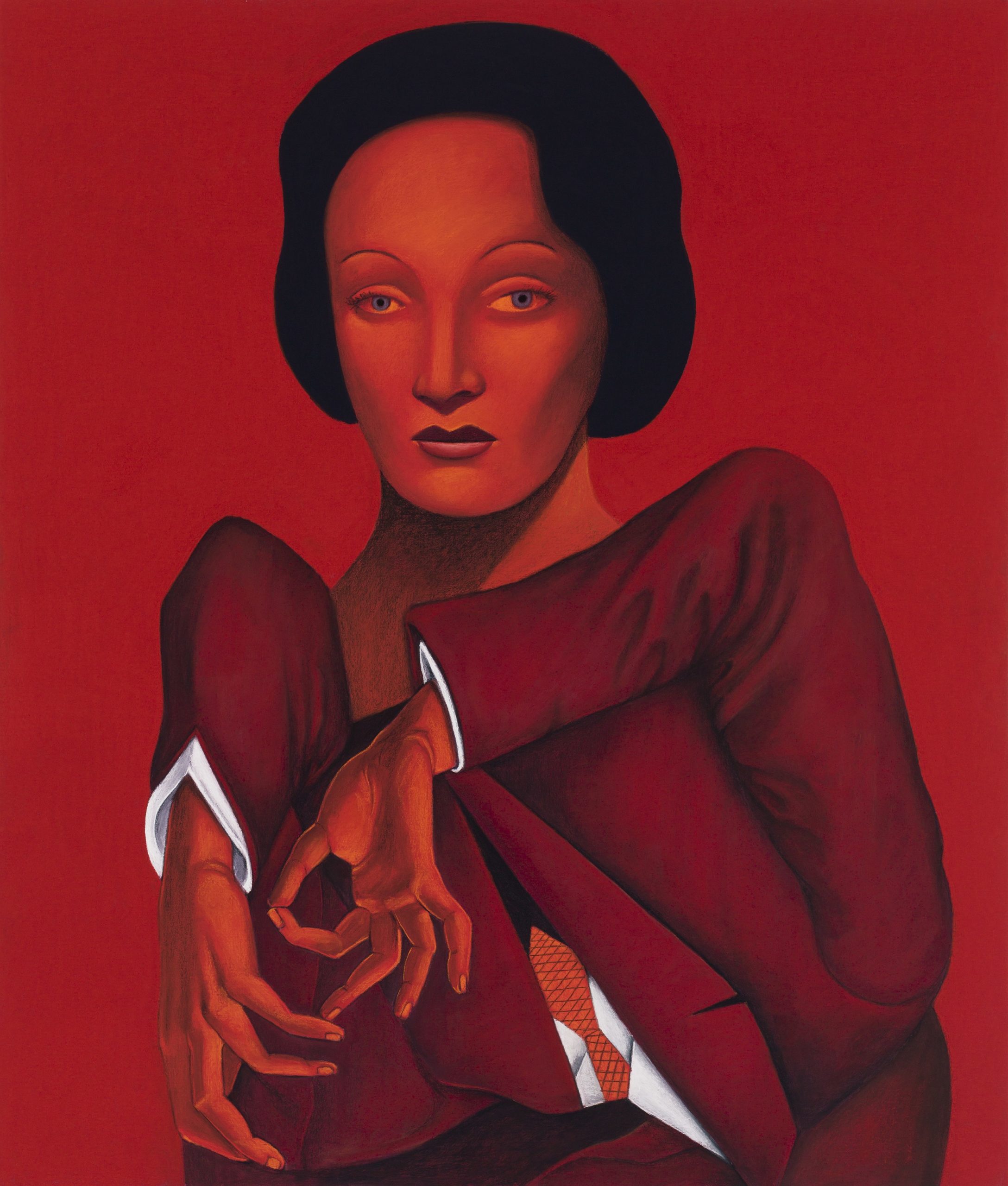 Nicolas Party, “Portrait with Lawyer,” 2021, collection of the artist, © Nicolas Party, photo by Adam Reich.
Nicolas Party, “Portrait with Lawyer,” 2021, collection of the artist, © Nicolas Party, photo by Adam Reich.
WW: But originally they were painted in color?
NP: Exactly. They deliberately chose to make them white. It’s the beginning of the rise of the idea of white as the non-color, of white marble as the only pure material. The idea of color is fought against so there’s a little bit of that in the process of the sculptures.
WW: It is relevant in that color is so prominent in your work, and the way it’s viewed—often against a richly painted wall or mural. Currently, you’re in Montreal, working on an in situ mural. What are you creating there, and how is it influenced by the museum’s architecture?
NP: Every show is different. This one is very big in terms of square meters and the number of rooms. It’s a very monumental space. It’s a classic building with columns. We only created two walls because the rooms are really perfect and have a lot of architectural details.
We painted all the walls in color, which I guess still feels unusual for some people. It’s funny because, in contemporary art, people think it’s almost a statement, but in most of the shows that are classic, never would you show on a white wall. It’s, of course, a choice, but the main
thing is, white walls are terrible for showing anything. It’s the same with the sculptures in white, this idea that white is neutral. If you take a photo in front of the sun, it rejects most of the light. If you put a painting on white, it’s similar. It brings too much light in and it eats the painting. Of course, you can show work on white, but most of the time it doesn’t work.
One of the parts of the show is choosing the color of each room. There’s repetition—two red rooms and two green rooms, and then there are five different murals. One of them is when you get up the big stairs, a bit like The Met, there’s this big wall there. I’m making a mural of that cloudy, smokey, purple, mauve twilight. Then there are three other murals—one of them is tree trunks, one is a cave, and the last one is big purple peaches. There’s a fantastic Otto Dix painting that will be on top of the cave.
It’s unbelievable to have this masterpiece painting on top of a mural. That, for me, is the most exciting and fun part.
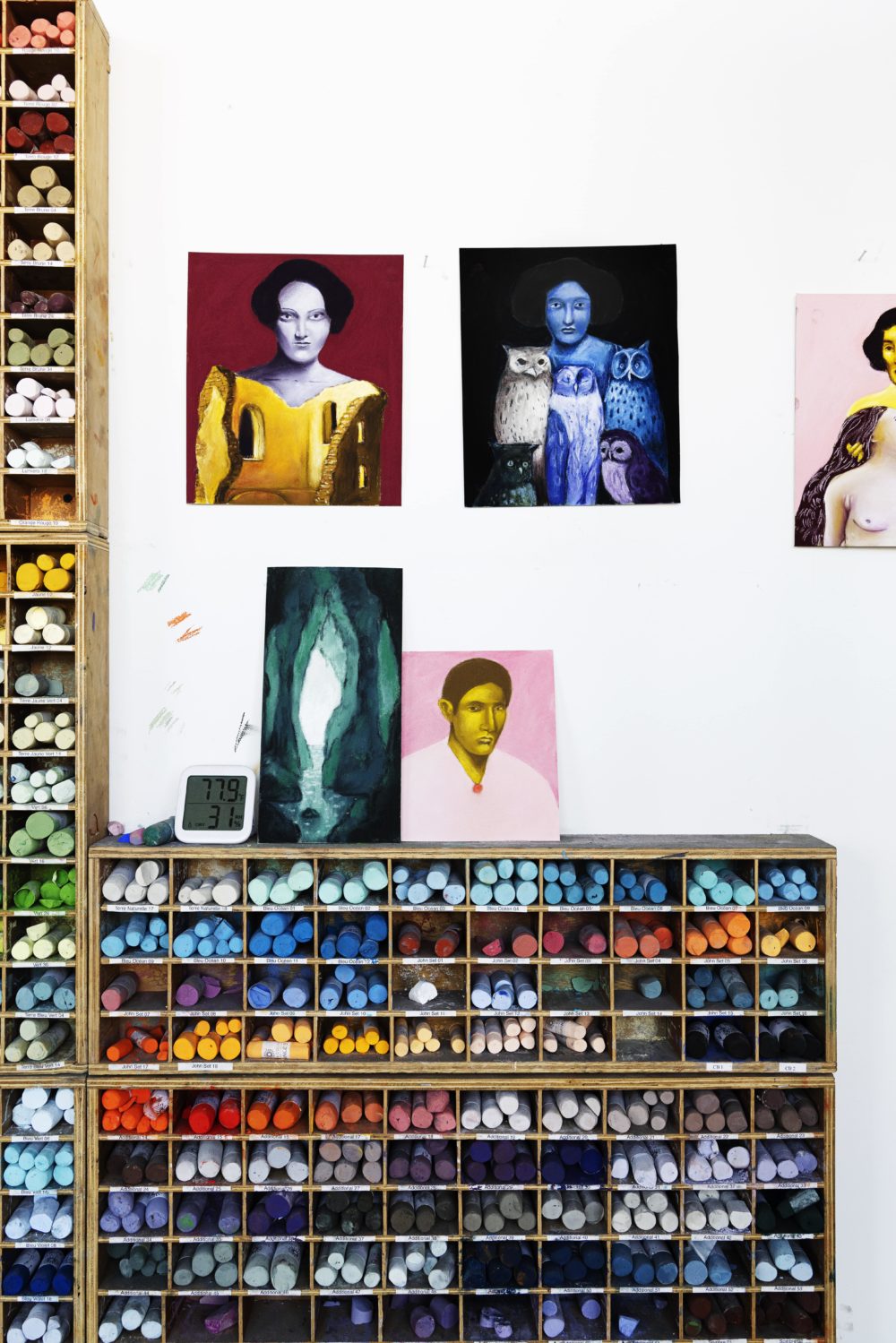 Nicolas Party’s studio, photo by Steve Benisty.
Nicolas Party’s studio, photo by Steve Benisty.






